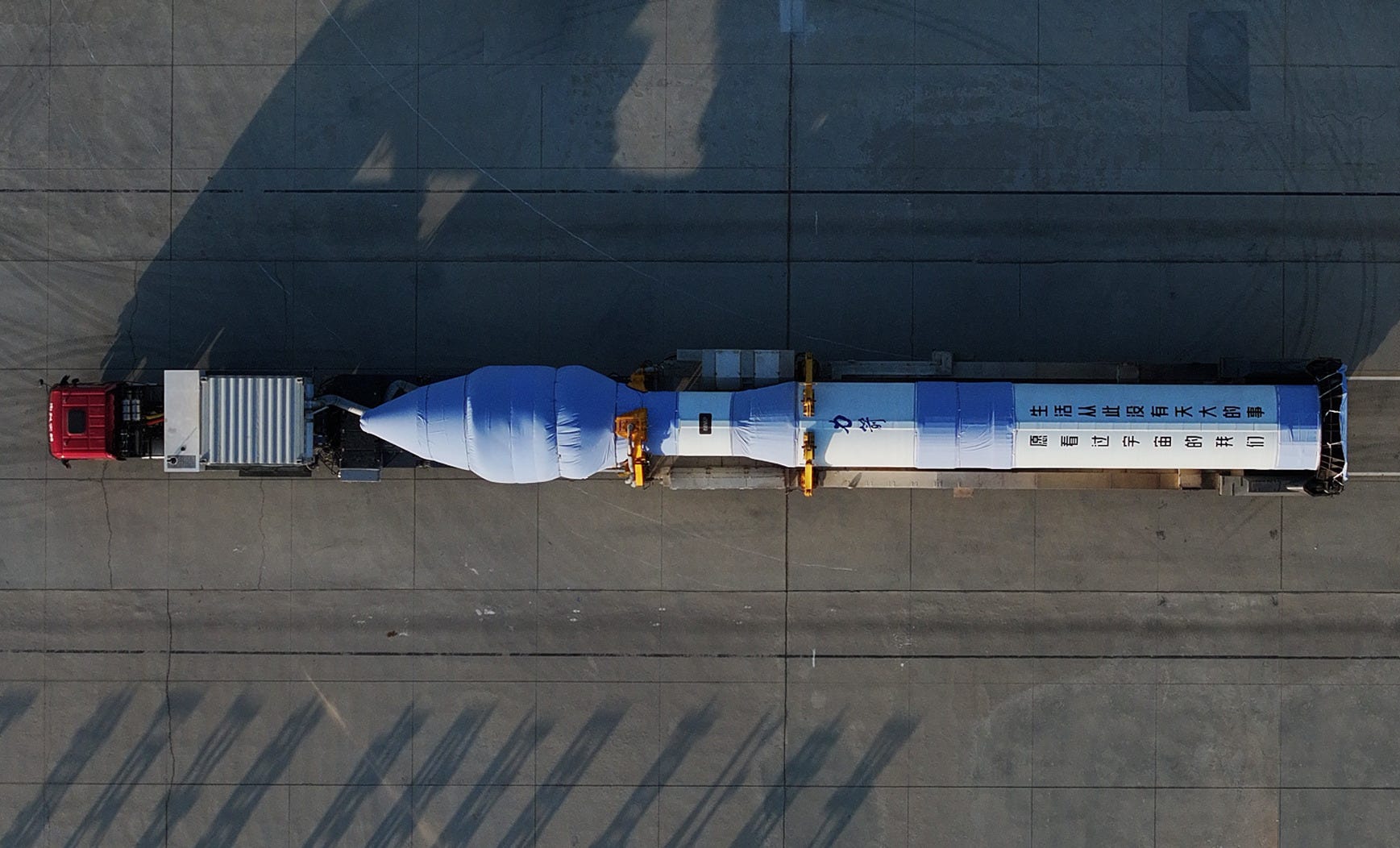CAS Space Discloses Cause of December's Kinetica-1 Failure
Kinetica-1's anomaly investigation was recently completed ahead of a busy year for the rocket.

Earlier today, January 23rd, CAS Space disclosed what it believes caused the failure of the Kinetica-1 Y6 mission last year, December 27th 2024. The company shared two similar, but not exactly the same, explanations on WeChat and Twitter (officially “X“). Both of these explanations are provided below.
Twitter
“Investigation for Kinetica-1 Y6 mission has concluded. Telemetry data indicated a failure of voltage output from the thermal battery powering the 3rd-stage servo, causing a loss of attitude control. The cause of failure was determined.”
”The most likely scenario was identified through failure tree analysis, re-production and investigation: the affected battery suffered from internal damages during a factory repair. With the damages, the component was no longer able to sustain the vibration in flight.”
”Data and video evidence have indicated no other failures, and the failure mode can be isolated. Following this incident, we have taken technical and operational updates to eliminate any further such or similar occurrences of failures.”
”These measures include extraordinary QC measures on existing and future subcontracted components, focusing on single-use, non-testable products. While the event saddens us all, we have no doubts that Kinetica-1 remains robust and reliable. This event will make us stronger.”
WeChat
“On January 21, 2025, CAS Space held a review meeting on the investigation results of the flight failure of the Kinetica-1 Y6 launch vehicle. After deliberation, the review team unanimously believed that the problem was accurately located, the mechanism was clear, the ground recurrence test was completed, the measures taken were effective, and the citing of the problem was completed and could be zeroed.”
”The Kinetica-1 Y6 launch vehicle was ignited and took off at 09:03 on December 27, 2024 in the Dongfeng Commercial Aerospace Innovation Test Area [at Jiuquan]. The first and second stages of the rocket flew normally, with the first and second stages separated, the second and third stages separated, and the fairing separated normally. After the third-stage engine was ignited, the measured value of the rocket's three-axis attitude angle deviation began to increase sharply and oscillated. The rocket actively controlled self-destruction and the flight failed.”
”After the failure occurred, the company immediately established an investigation committee and organized senior experts in the aerospace field to set up a review committee; strictly followed aerospace standards, adhered to the principle of looking inward and completely returning to zero, and organized relevant supporting units to conduct in-depth fault analysis and troubleshooting to find out technical and deep-seated management issues.”
”After telemetry data analysis, ground test simulation and troubleshooting tests, the most likely reasons for this failure are: damage to the internal activation circuit wire caused by external forces during the rework process of the three-stage servo thermal battery, random vibration during flight and other mechanical environments. Fatigue fracture caused the battery pack to fail to output normally, causing the three-stage servo mechanism to fail to act according to instructions, resulting in attitude instability, self-destruction of the rocket, and mission failure.”
”In the future, the company will deeply learn from the lessons of this failure, take a series of technical improvement measures to further improve the launch and flight reliability of the rocket; strengthen the quality process control of outsourcing products to further reduce the risk, and spare no effort to ensure the success of the subsequent missions.”
”Thanks to the review expert group for their guidance and help to CAS Space during the investigation process, to the supporting units for their seriousness and responsibility, to the customers for their trust and understanding, and to all shareholders for their companionship and support. CAS Space will face future opportunities and challenges with a more robust attitude, better serve customers, and contribute CAS Space’s strength to commercial aerospace.”
If there are any problems with this translation please reach out and correct me.
Before the anomaly during the last mission, Kinetica-1 had flown five times, all successfully without issue.
CAS Space did not mention when Kinetica-1’s next mission would be. Speaking to CGTN last year, it was stated that there could be between eight to ten launches in 2025. A few stages and other components are believed to be ready for Kinetica-1’s next mission.
What is Kinetica-1?
This section is for those less familiar with China's various commercial launch vehicles.
Kinetica-1 is CAS Space's first launch vehicle and consists of four stages, all burning solid fuel. CAS Space offers the ability to launch a single satellite to utilize all of the rocket's payload capacity, however more 'rideshare' missions occur for multiple satellites to be delivered in one launch.
The payload capacity of the launch vehicle is currently as follows:
2,000 kilograms to low Earth orbit
1,500 kilograms to a 500-kilometer sun-synchronous orbit
The first-stage is powered by a solid rocket booster that burns an unspecified solid fuel, generating 200 tons of thrust. The second-stage is also powered by a solid rocket booster, producing 110 tons of thrust with the same unidentified propellant. The-third stage, also using the undisclosed propellant, generates 45 tons of thrust. Finally, the fourth-stage is powered by another solid rocket booster, providing 8 tons of thrust with the same solid propellant.
On its launch pad, Kinetica-1 stands at 30 meters tall. The first two stages have a diameter of 2.65 meters, the fairing has a diameter of either 2.65 or 3.35 meters. When prepared for launch Kinetica-1 weighs a believed 135,000 kilograms.
So far Kinetica-1 has flown all of its missions from CAS Space’s launch facility at the Jiuquan Satellite Launch Center.


